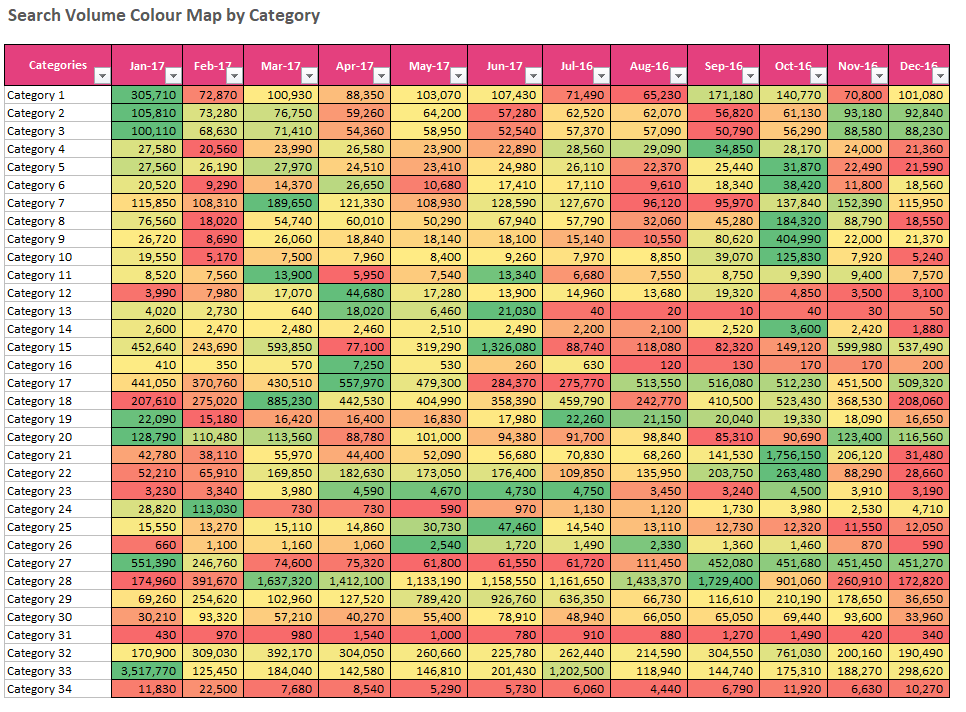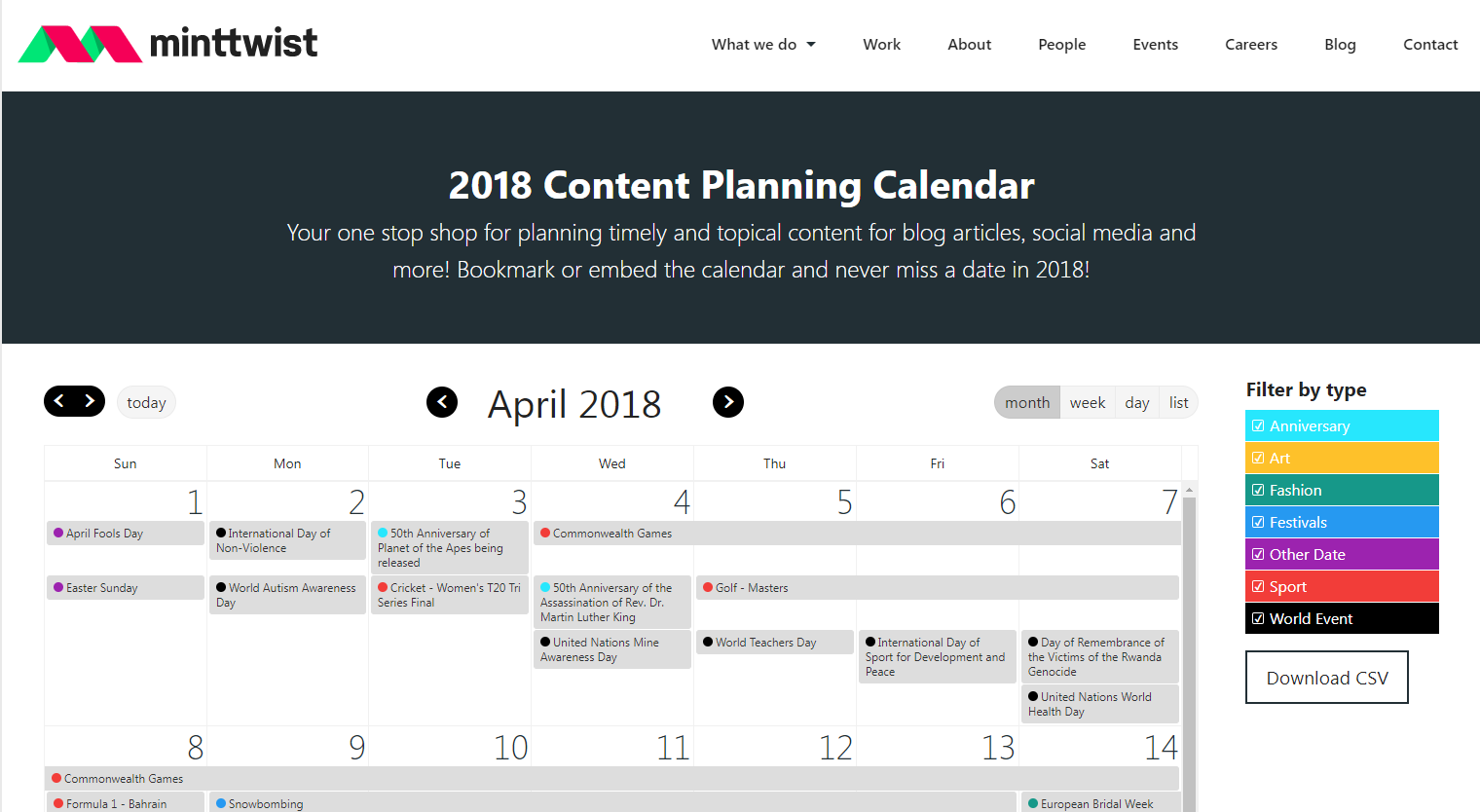Have you ever wracked your brain, struggling to come up with content for the upcoming week? Generating great, relevant posts on a regular basis can be really challenging. So how do so many businesses, including Forbes, Mashable and Cosmopolitan, continue to come up with consistent content? The answer: content calendars.
What are Content Calendars and Why are they Important for Businesses?
Marketing teams use content calendars as a handy tool to plan and schedule content pieces months in advance. Often they use shareable Cloud-based platforms such as Google Sheets, to ensure all staff members are aware and prepared for the content schedule. Unlike a straightforward list of planned content, the calendar acts as an effective visualisation tool to see how content will be distributed over the year.
Content calendars, above all, keep your business organised. Long gone will be the days of frantically trying to come up with a post for the day, or rushing to get an article out on time. It can be a blessing to come into work knowing exactly what is going to be posted on what platform and have that post ready to go. It also creates consistency, ensuring the marketing team updates each platform regularly without bombarding followers with content.
In addition to staying organised, content calendars can be a terrific way to make sure every opportunity is identified and capitalised on. Holidays or events that relate to your business can be a chance to create special and relevant content for your audience. For instance, a sporting goods store might schedule tennis-centric posts to coincide with the Australian Open.
What Does your Audience Want to See?
To begin, it is important to determine what your audience is interested in and at what times. You don’t want to spend time crafting a great article for March only to realise it would have been far more effective in December.
Keyword research plays a significant role in figuring out what your audience wants to see. Looking up keywords and phrases associated with the brand and its offerings can provide a solid indication of what consumers are searching for. After downloading the data (with the monthly search volume breakdown), similar search terms can be grouped into broad categories. The month with the highest search volume can then be identified for each category.

These topics will then form the basis of content. Not only will this ensure content is highly relevant to the business’s current social media following but is an effective method to increase the content’s exposure to new audiences.
How Do you Plan the Content Calendar?
Before the actual content calendar is compiled, an ideation calendar should first be created. This calendar will exhibit both the keyword research along with industry-specific holidays and events that will ultimately be useful for generating content ideas. The crucial element here is to retain a mix between general, topical content and data-driven categories which are focused on your product. Having a mix between these two is essential. One of the neatest ideation calendars we’ve seen is from MintTwist, a small agency out of the UK. Their content calendar is as comprehensive as we’ve seen, looking at events across a wide range of business verticals.

When considering building out one of these calendars which is targeted at search data. The first thing to do is add the high search volume terms into the calendar. For instance, a fashion retailer might put “Searches for ankle boots peak this month” under June. Next, events and holidays relevant to the company should be added to the calendar. In the case of the fashion retailer, events/holidays which are strongly associated with shopping, such as Black Friday and Boxing Day, can be added. Finally, general consumer holidays that are still somewhat relevant to the business should be inserted. This includes holidays such as Christmas, New Years and Valentine’s Day.
Once the ideation calendar has been assembled, content can be planned based on that information. This content can come in a variety of forms, from videos to articles to infographics. In this stage, it should be established what the content is about and what platform/s it is intended for. It can also be helpful to determine at least five keywords from the keyword research that are strongly associated with the piece of content. These keywords can be used to inform what the title of an article/webpage should be. Proposing the URL structure and internal links towards the page can also be very beneficial. Planning these elements well ahead of time can help to ensure content publication runs without a hitch.
Create and Post your Content
When preparing the actual content, it is generally a good idea to complete it at least a month prior to the publishing date. Whether it be simply an image or an in-depth article, producing the content far ahead of schedule will give content creators plenty of time to research and create. It will also be sufficient time for reviews and edits, to ensure only quality marketing materials are released.
Looking for more ROI from your marketing?
Looking for more ROI from your marketing?



